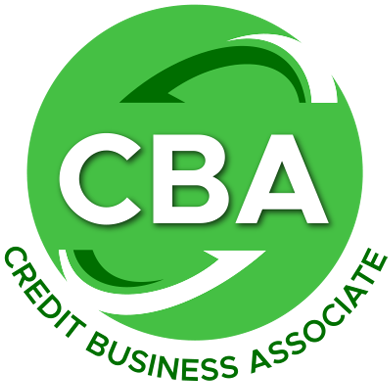Credit Business Associatesm (CBAsm)
Exam Study Outline
NIC Links
Recommended Texts
The following textbooks, all of which are available for purchase through the NACM Bookstore, should be used to prepare for the exam:
- Principles of Business Credit, by NACM
- Accounting by Warren, Reeve & Duchac or any college-level financial accounting text
- Understanding Financial Statements by Lyn Fraser
- Credit Management: Principles and Practices by Dr. Charles Gahala, CCE (optional, review text)
This guide outlines the chapters covered by the CBA exam. Please be aware that this study outline is intended as a general guide for preparing for the examination. In-depth preparation (study sessions, seminars, self-study courses, etc.) is recommended in conjunction with reviewing the material within this study outline.

CBA Exam Format
The CBA exam typically consists of approximately 125-150 true/false and multiple choice questions of an equal point value. Exam questions are drawn from the recommended texts covering any or all of the suggested topics. The exam may require the preparation of a balance sheet, an income statement, a statement of cash flows, or common size analysis (vertical or horizontal). Candidates have three hours in which to complete the exam and may not use texts or notes, but may use hand-held calculators during the examination. Candidates must earn a score of 70% to pass this examination. NACM reserves the right to change the format of the exam at any time.
If you are in any way uncertain about the references or topics listed, please contact the National Education Department for clarification prior to the exam.
Principles of Business Credit, 8th Edition
-
Chapter 1Credit in the Business World
-
Chapter 2Credit in the Company
-
Chapter 3Organizing the Credit Department
-
Chapter 4The Credit and Sales Partnership
-
Chapter 5Legal Forms of Business
-
Chapter 6Legal Environment of Credit
-
Chapter 7The Uniform Commercial Code
-
Chapter 8Credit Policy and Procedures
-
Chapter 9Credit Applications
-
Chapter 10Terms and Conditions of Sale
-
Chapter 11Credit Investigations
-
Chapter 12Business Credit Fraud
-
Chapter 13Making Credit Decisions
-
Chapter 14International Trade
-
Chapter 15Financing and Business Insurance
-
Chapter 16Negotiable Instrument
-
Chapter 17Bankruptcy Code Proceedings
-
Chapter 18Bankruptcy Alternatives
Accounting, 27th Edition
-
Chapter 1Introduction to Accounting and Business
-
Chapter 2Analyzing Transactions
-
Chapter 3The Adjusting Process
-
Chapter 4Completing the Accounting Cycle
-
Chapter 5Accounting Systems
-
Chapter 6Accounting for Merchandising Businesses
-
Chapter 7Inventories
-
Chapter 8Sarbanes Oxley, Internal Controls, and Cash
-
Chapter 9Receivables
-
Chapter 10Fixed Assets and Intangible Assets
-
Chapter 11Current Liabilities and Payroll
-
Chapter 12Accounting for Partnerships and Limited Liability Companies
-
Chapter 13Corporations: Organization, Stock Transactions, and Dividends
-
Chapter 14Statement of Cash Flows
Understanding Financial Statements
-
Chapter 1Financial Statements: An Overview
-
Chapter 2The Balance Sheet
-
Chapter 3Income Statement and Statement of Stockholders’ Equity
-
Chapter 4Statement of Cash Flows
-
Chapter 5The Analysis of Financial Statements
Credit Management: Principles & Practices, 4th Edition
-
Part I: An Introduction to Business Credit Management
-
Chapter 1The Changing Nature of Credit Management
-
Part II: Credit Policy and the Extension of Credit
-
Chapter 4Managing Credit Policy
-
Chapter 5Legislation and Regulations Pertinent to Business Credit Decision Making
-
Chapter 6Conducting the Credit Investigation
-
Chapter 7Business Credit Reporting
-
Part III: Credit, Collection and Analysis
-
Chapter 8A Systematic Approach to Effective Collection Activity
-
Chapter 9Financial Statement Analysis Part IV: Secured Credit and Bankruptcy
-
Chapter 11Secured Credit Arrangements and Letters of Credit
-
Chapter 12Bankruptcy and Reorganization